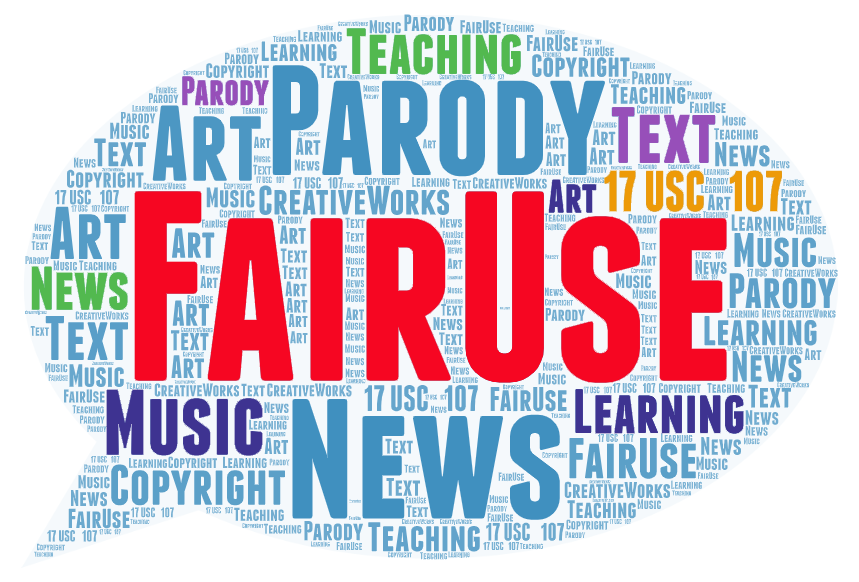
Fair Use Week is February 20 – 24, 2023. The Association of Research Libraries (ARL) designated this time to highlight and promote what fair use allows with copyrighted works.
Q1: What is fair use? I heard it lets me reuse copyright-protected works for my teaching and research.
A: Fair use is an exception in US copyright law (17 USC § 107) that allows some use of materials without getting permission from a copyright holder and in limited and transformative purposes such as commentary and critique, news, and parody. Its use also depends on the details of why, where, how much, and how long it is being used.
Q2: I thought if I used a book, movie, or article for my class, it was automatically fair use, but I heard this was incorrect. Can you explain?
A: Fair use allows some use of these materials for teaching purposes, but it is not a given. To consider whether to use a work, try a fair use analysis. This can help you objectively review the four factors of fair use (PANE: purpose, amount, nature, and effect) and consider if your intended use qualifies. Try the Libraries’ Fair Use Analysis at https://libguides.fau.edu/fair-use.
Q3: What are some examples of fair use I can use in my teaching?
A: You could use a brief segment from your personal DVD to illustrate a point you want to make in your in-person class. It is a fair use when you ask your students to appropriately quote, paraphrase, or cite work in their assignments. Having your students write parody or fan fiction of an original as an assignment qualifies as fair use. It would depend on the details of your use and the work you’re using.
Q4: Do you have any better practices or suggestions that can help me with fair use?
A: Yes! Our Fair Use Research Guide has links to best practices created by disciplines and communities of practice who worked with attorneys. Although best practices are not law, they provide guidance and recommendations for those in various disciplines (journalism, visual arts, media studies, etc.) and those who want to use certain materials (film, images, online video). See the guide at https://libguides.fau.edu/fair-use/best-practices.
Q5: Fair use is complicated! Why is it this way?
A: The law is only 173 words long and does not provide explicit parameters for what falls under fair use. A lot of what is believed about fair use originates from outdated best practices. The common belief that using less than 20% of a given work is considered fair use originated from the 1970s when most works were in print. In addition, the increasing availability of digital works complicates fair use, and copyright law has not kept up with rapid changes in technology or how we use it.
By Kristy Padron, MLIS
Scholarly Communication Services Coordinator
 FLORIDA ATLANTIC UNIVERSITY
FLORIDA ATLANTIC UNIVERSITY
